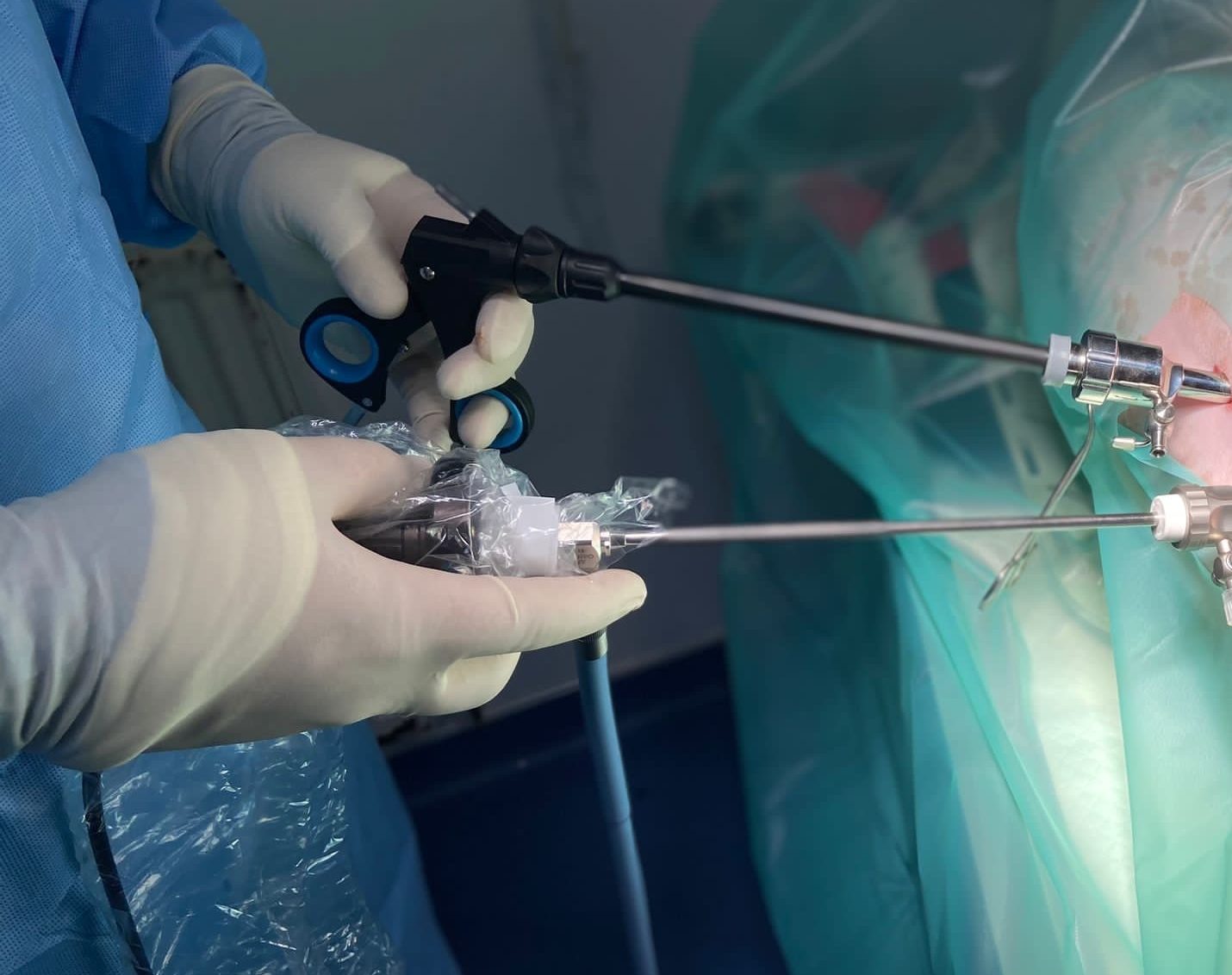
Keyhole Spay
Laparoscopic Spay

A modern approach to pet sterilisation
Laparoscopic spay, often referred to as a minimally invasive spay or keyhole spay, is an advanced surgical technique designed to safely sterilise female dogs and cats. This innovative approach contrasts sharply with traditional surgeries that necessitate a large incision to remove the ovaries and, in some cases, the uterus. Instead, laparoscopic spay employs small incisions and specialized instruments, ensuring a more precise procedure. The advantages of this method are compelling, featuring less pain, quicker recovery times, and the added benefit of smaller scars, making it an excellent choice for your beloved pets at Warren House Veterinary Centre.
What is Laparoscopic spay?
Laparoscopic spay is an advanced surgical procedure that involves the removal of the ovaries, and occasionally the uterus, of a female pet through small incisions. This minimally invasive technique utilises a laparoscope, a slender, tube-like instrument with a camera and light that grants us a clear view of the internal organs on a monitor. Through additional small incisions, specialized surgical instruments are introduced, allowing for the careful removal of the ovaries with precision.
Benefits:
Reduced pain
The smaller incisions and less invasive nature of the procedure mean that pets experience significantly less pain during recovery.
Faster recovery
Pets can usually return to normal activities within a few days after a laparoscopic spay, compared to a week or more with a traditional spay.
Smaller scars
The small incisions result in minimal scarring, which is not only cosmetic but also reduces the risk of post-operative complications like infection.
Lower risk of complications
The enhanced visualisation and precision of laparoscopic surgery reduce the risk of complications, such as bleeding or accidental damage to surrounding organs.
Improved safety
For overweight or older pets, laparoscopic spay can be a safer option due to the reduced strain on the body.
How Laparoscopic Spay Differs From Traditional Spay
Incision Site
Traditional spay surgery requires a larger incision, often several inches long, to access the ovaries and uterus. Laparoscopic spay uses 2-3 small incisions, usually less than a half-inch each.
Visualisation
In laparoscopic spay, the veterinarian has a magnified, high-definition view of the internal organs, allowing for more precise and controlled surgery.
Pain and Recovery
Due to the smaller incisions and less tissue trauma, pets undergoing laparoscopic spay typically experience less post-operative pain and recover more quickly than those who undergo traditional spay.
Laparoscopic Spay Procedure: Step-by-step

Pre-Surgery Preparation
The pet is given a thorough physical examination and blood tests to ensure she is healthy enough for surgery. General anaesthesia is administered.
Incisions
Our vet makes 2-3 small incisions in the pet’s abdomen. Through one incision, the laparoscope is inserted, providing a view of the internal organs on a monitor.

Surgery
Specialised instruments are inserted through the other incisions. The ovaries are carefully identified, clamped, and cut using electrocautery or other advanced tools. If the uterus is to be removed, this is done at the same time.
Closing the Incisions
Once the ovaries (and possibly the uterus) are removed, the incisions are closed with sutures.

Post-Surgery Recovery
Your pet is monitored as they wake up from anaesthesia. Pain relief is provided as needed, and most pets can go home the same day.
Aftercare & Recovery
To ensure proper healing, keep your pet calm and quiet for a few days after surgery. Monitor incision sites for signs of infection like redness or swelling and prevent your pet from licking or scratching them. A follow-up visit is scheduled to check on healing and remove any sutures if needed. Pain medications are usually prescribed for a few days, but the requirement is often less than with traditional spay.
FAQ
Is Laparoscopic spay available for cats?
Yes, laparoscopic spay can be performed on cats, although it is more commonly done in dogs. The procedure offers the same benefits for cats, including reduced pain, faster recovery, and smaller scars.
What are the risks associated with laparoscopic spay?
As with any surgery, there are risks, including reactions to anesthesia, bleeding, or infection. However, the risks are generally lower with laparoscopic spay compared to traditional spay due to the less invasive nature of the procedure.

Schedule a consultation:
If you are considering spaying your pet, a laparoscopic spay offers a safer, less painful alternative to traditional methods. Contact us today to schedule a consultation or to learn more about the benefits of laparoscopic spay.

